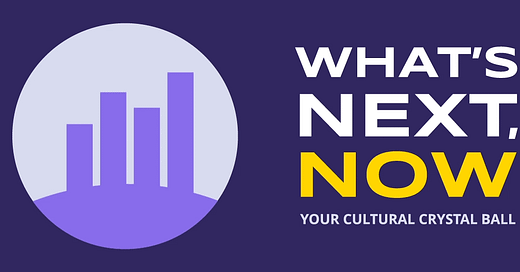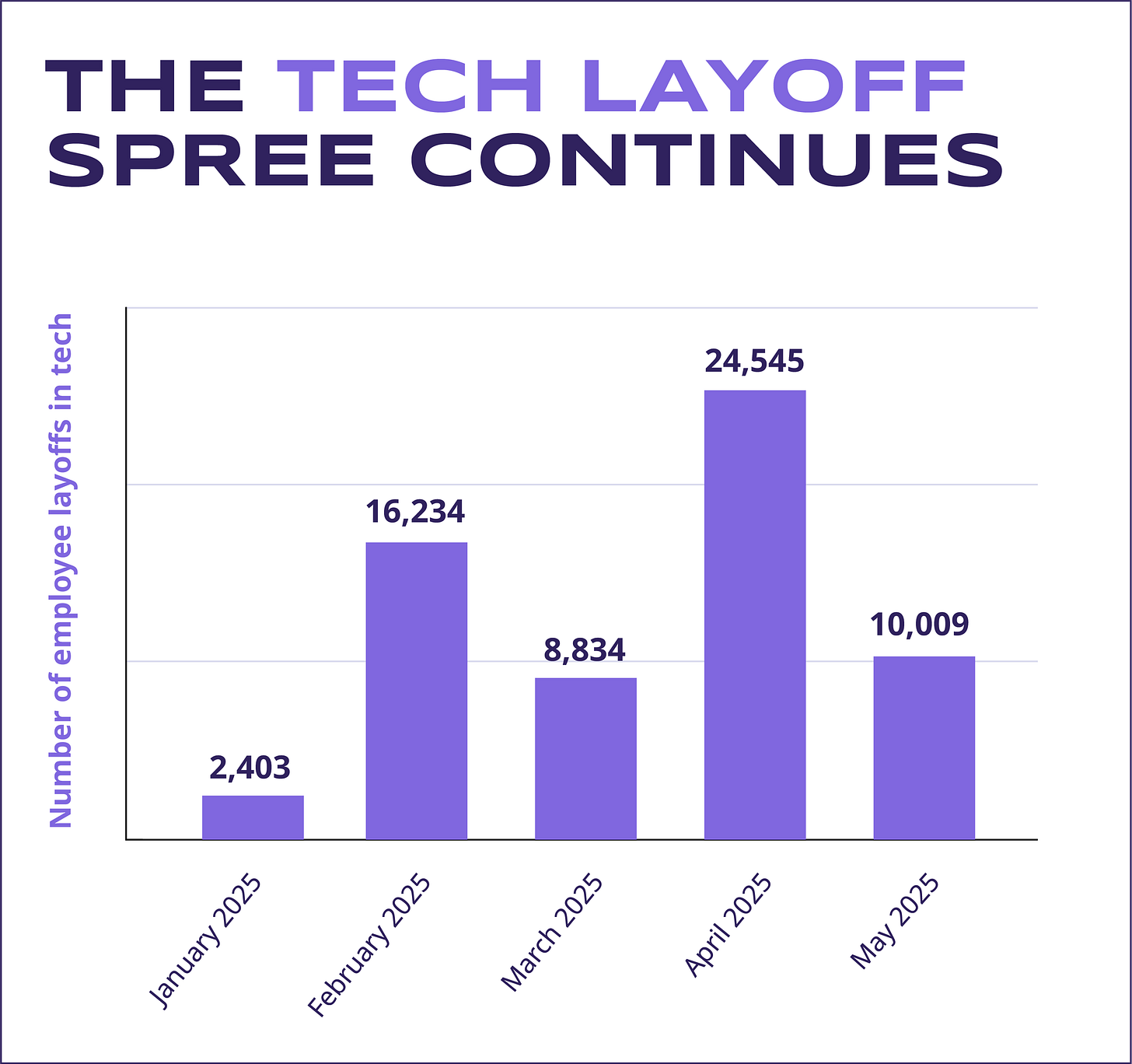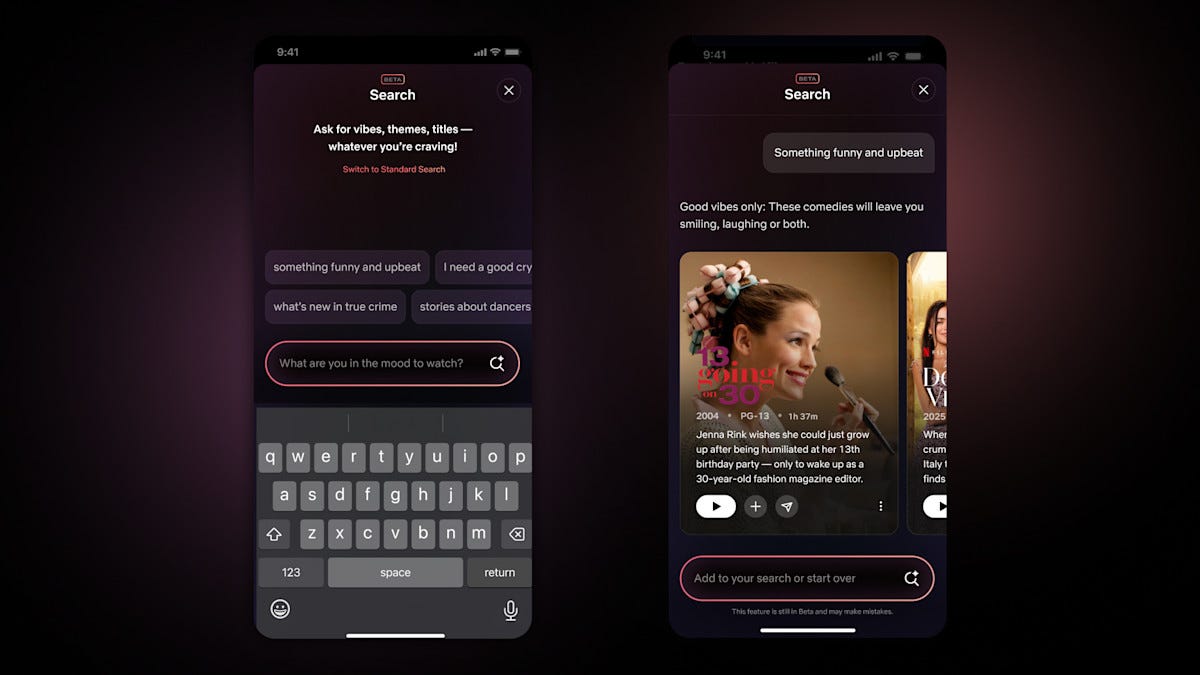What's Next, Now: June 2025
This month, our crystal ball predicts growing newsletter fatigue, a new American dream, the rise of sorry, and more.
Back when email was a novelty, “you’ve got mail” was an exciting greeting. But today, between newsletters, Substacks, promos, and subscriptions, getting an email has become just one more thing to take care of in an already cluttered online environment.
And yet, brands keep showing up there.
Companies like American Eagle and Hinge have launched their own Substacks, joining the digital publishing boom in a bid to earn attention and engagement directly from users. Hinge’s “No Ordinary Love,” for instance, lives exclusively on Substack — an unexpected move for a brand that famously stepped away from social media back in 2020.
And it’s not just brands. The New Yorker recently profiled how writers are turning Substack into a novel-writing hub by bringing serialized fiction into subscribers’ inboxes. Creatively, it’s a bold new frontier. But from a user-experience perspective, it raises a key question: Are readers even opening these anymore?
The rise of digital fatigue is prompting brands to rethink their approach to audience engagement. Rather than add to the noise with more content for the sake of it, some are finding success by leaning into quality.
On Substack, the brands that are breaking through aren’t just promoting products — they’re hiring independent journalists, commissioning original essays, and building editorial voices that feel less like marketing and more like media. Hinge’s “No Ordinary Love,” for example, reads more like a culture magazine than brand content, helping it stand out in crowded inboxes.
At the same time, other brands are going even further offline. In an age dominated by AI and instant notifications, companies like Microsoft, Hinge, and Costco have invested in their own printed magazines to tell richer stories, stand out in a less cluttered space, and forge more meaningful, lasting connections with readers.
We’re not blind to the irony of talking about email fatigue in a newsletter. But in the name of value, here’s what we’ve got: Whether you're hitting “send” or heading to the printer, the medium matters less than the intention behind it. Audiences are craving original perspectives, thoughtful curation, and content that respects their time.
For years, a job in tech was the gold standard. High salaries, amenity-filled offices, and the promise that your work is shaping the world as we know it. But today, the tech world doesn’t have the same lure it once had. A consistent wave of layoffs, flattening org charts, and generative AI are shaking up what once seemed like a bulletproof industry.
According to Business Insider, the tech industry has shed 175,000 jobs since its peak in late 2022. While the biggest names in tech are still growing in influence, internally there is unrest as the organizations completely restructure. Middle management positions are on the chopping block and entry-level roles are increasingly being replaced by AI. Some are calling it “the great flattening.” Others, like University of Washington researchers, point to cruel optimism: the idea that tech once promised unlimited growth, but now only delivers churn and uncertainty.
Heeding this warning, new grads are adapting. LinkedIn’s latest Grad Guide shares that while the #1 fast-growing job title for new grads is AI Engineer, the top industries aren’t what you’d expect. Construction, utilities, and energy (including oil and gas) are pulling ahead in popularity. Although historically less glamorous, the stability draws people in.
The next generation is questioning whether a job in tech is really the American dream. As the industry shifts, we’ll likely see a rebalancing toward hands-on work and a return to practical skills with real-world value. The future of work might even look more like the past, with plumbers, electricians, and engineers leading the charge. But a new opportunity could arise for these blue collar professionals to pursue a techy side gig. With the help of generative AI, a new era of side hustles is loading.
A lot has been said about how AI is upending the world of search. SEO tactics are changing. Search traffic is dropping. But search doesn’t just mean Google — AI is giving a makeover to another kind of search as well.
Recently, two major content-turned-tech companies announced similar search transformations:
LinkedIn’s new search feature aims to make the job hunt more conversational and less transactional. For example, job seekers might type “I want to make cities more walkable and bike-friendly” or “I want to find remote entry-level jobs in video game marketing” — similar to how you’d describe a dream job to a friend, rather than to a keyword-driven search engine.
Netflix announced a search tool that could drum up content based on “vibes.” Instead of browsing the catalog or looking for a specific show, just describe what you’re in the mood to watch and Netflix will do the rest.
Both announcements point to a new kind of in-app search experience, where vibes rule over keywords. We’re moving away from learned behavior (think: “restaurant Boston best” Google-style syntax) and back toward the way we naturally think, speak, and ask for what we want.
It might be a little ironic to say that AI, a technology so complex even its creators don’t really know how it works, is making our world more human. But we see this as one important area AI will continue to grow in the future — tools that understand what we mean, not just what we type.
Meanwhile, back at Google, AI is moving beyond text to interact more naturally with the human world. At this year’s Google I/O, the company announced a futuristic-sounding expansion of its Gemini Live search experience. Rolling out to Android and iOS, it allows users to use their smartphone camera and microphone to talk to Gemini about what they’re seeing: Imagine pointing at your broken coffee maker and asking what’s wrong, or having your phone help locate a missing pair of keys. This immersive search experience could spread to other apps soon.
When remote work became the norm in 2020, it felt like a revolution. No more long commutes, rigid dress codes, or fluorescent-lit cubicles. For many, it offered a long-overdue chance to rebalance work and life. But as the novelty has worn off, a more complicated reality is setting in.
In 2019, 60% of remote-capable employees (those whose jobs could be done at least partially from home) worked solely on-site. Then came the pandemic. Practically overnight, 70% of remote-capable employees found themselves working exclusively from home.
At first, the shift was surprisingly energizing. Productivity rose. Employee engagement ticked up. Workers embraced flexibility and autonomy. But five years later, many remote employees are now grappling with emotional fatigue, disconnection, and a creeping sense of unhappiness.

The reasons are complex. A lack of in-person interaction, blurred work-life boundaries, and the ever-present challenge of visibility and recognition in a remote environment all play a role. One subtle but significant contributor to this feeling of isolation is the decline of “third spaces” — those places outside of home and work where people once found community and connection. Increasingly, these spots are being taken over by remote workers looking for not-quite-at-home offices, leading to a blurring of lines. But some of these establishments are pushing back by removing or restricting Wi-Fi access to discourage all-day laptop sessions, leaving remote workers with fewer options for breaking up the work-from-home monotony.
As mental health becomes a top workplace concern — 14% of young job seekers now cite it as their biggest barrier to employment, ahead of lack of skills or experience — organizations must reconsider how they support remote teams.
That might mean rethinking benefits or experimenting with new ways to nurture employee well-being. For example, Mars recently partnered with Calm to launch pet-inspired mindfulness content. The initiative was based on research showing that 78% of dog or cat owners say their pets remind them to take breaks.
For remote work to remain sustainable long-term, employers will need to go beyond productivity metrics and start investing in the emotional infrastructure that keeps their people healthy, connected, and inspired — no matter where they’re working from.
Brands are moving fast on AI, but some are moving just as fast to reverse course on their new strategies. Over the past year, companies like IBM, Klarna, and Duolingo made bold moves to integrate AI into their hiring and operations. Now, many are walking those decisions back, some quietly, and others surprisingly publicly.
At Klarna, the fintech brand once boasted that AI was doing the work of 700 people. But just last month, CEO Sebastian Siemiatkowski acknowledged the strategy had fallen short. “Cost unfortunately seems to have been a too predominant evaluation factor when organizing this,” he told Bloomberg. “What you end up having is lower quality.” His takeaway? Customers need to know “there will always be a human, if you want.”
Duolingo, meanwhile, faced user backlash after leaning heavily on AI-generated lesson content, especially for lesser-known languages. Rather than ignore the criticism, the brand leaned in (as it so often does). CEO Luis von Ahn appeared in a TikTok video to answer tough, direct questions about their AI strategy, signaling a moment of transparency amid the hype.
 Tiktok failed to load.
Tiktok failed to load.Enable 3rd party cookies or use another browser
IBM Chief Executive Arvind Krishna also recently told The Wall Street Journal that while the company let go of thousands of employees in HR and operations, it ended up hiring even more in areas like programming and sales. Automation created efficiencies, he said, but also underscored where human skills are still essential.
AI is forcing every company into a test-and-learn era. Some experiments work, and others don’t. But from a communications standpoint, this kind of openness may signal a shift in how companies talk about AI: not just as a shiny future-forward tool, but as something they're still actively figuring out, just like their customers are.
We expect to see more brands owning the messy middle: admitting what didn’t work, explaining what they learned, and reintroducing the human side of their brand as a key value, not a fallback plan. In a world where AI is increasingly becoming table stakes, communication transparency might be the new differentiator.
Axios and Harris Poll’s 2025 reputation rankings are out, and we’re seeing some major shifts. Purpose-driven and price-conscious consumer brands like Trader Joe’s, Costco, and Arizona Tea have taken over the top spots, while some major tech brands like Google and Tesla dropped dramatically.
In March, we predicted YouTube would make a move into live sports, the only category it hasn’t yet taken the crown. Now, the content giant is streaming its first ever life NFL game.
Whether we’re in a recession or a vibecession, it doesn’t really matter. Consumer sentiment has dropped to nearly all-time lows, and Americans are even starting to cut back on snacks.
2000s pop punk band All-American Rejects are finding a way to hit back at the Live Nation concert monopoly by going directly to fans on a “House Party” tour.
Want to hear more? Explore the Tier One blog, TOP TALK, for the latest digital marketing trends, tips, and insights.
Copyright © 2025 Tier One Partners is a women-owned full-service PR, content, and digital marketing agency. We work with innovators in B2B and B2C technology, digital healthcare, financial services, energy tech, and manufacturing to develop award-winning creative, data-driven strategies that propel them to industry leader status. From day one, we’re committed to earning our clients’ trust, sharing their vision, and embedding their purpose into everything we do. To learn more, visit wearetierone.com.



















